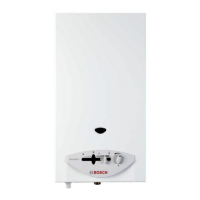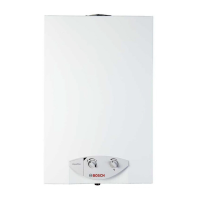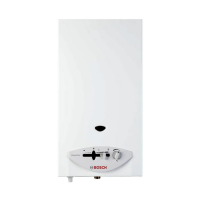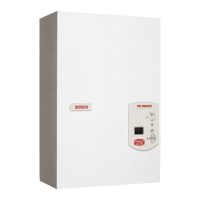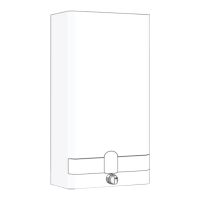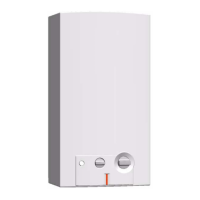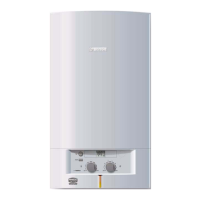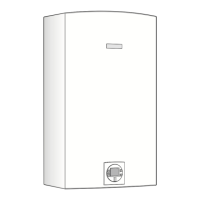WW
WW
W
ARNINARNIN
ARNINARNIN
ARNIN
GG
GG
G
LP & NLP & N
LP & NLP & N
LP & N
G ARE EXTREMELG ARE EXTREMEL
G ARE EXTREMELG ARE EXTREMEL
G ARE EXTREMEL
Y FLY FL
Y FLY FL
Y FL
AMMABLE SOAMMABLE SO
AMMABLE SOAMMABLE SO
AMMABLE SO
TT
TT
T
AKE EXTRA PRECAAKE EXTRA PRECA
AKE EXTRA PRECAAKE EXTRA PRECA
AKE EXTRA PRECA
UTIONS WHENUTIONS WHEN
UTIONS WHENUTIONS WHEN
UTIONS WHEN
PERFPERF
PERFPERF
PERF
ORMINORMIN
ORMINORMIN
ORMIN
G ANY WG ANY W
G ANY WG ANY W
G ANY W
ORK TORK T
ORK TORK T
ORK T
O THE HEAO THE HEA
O THE HEAO THE HEA
O THE HEA
TERTER
TERTER
TER
CT-05
page 1 of 1
rev 10/06
Bosch Water Heating
340 Mad River Park, Waitsfield, VT 05673
©BBT NORTH AMERICA CORPORATION
Bosch Group
NEGATIVE AIR & FREEZE
PREVENTION
MODELS: 1000P, 1600P, 1600H,
260PN, 425PN, 425HN
Negative Air
• Negative air pressure in a structure occurs when air con-
sumed by fuel burning appliances or exhaust systems in that
structure exceeds the amount of air available.
• Here is a list of items that consume air within a typical house-
hold:
• Stove exhaust fans
• Furnaces
• Water heaters
• Fireplaces/ Woodstoves
• Bath fans
• Dryers
• All of these items must be taken into account when making
provisions for a proper amount of fresh air from the outside.
• If the building is new cons truction, air infiltration from the
outside will be limited and provisions for extra air supply
should be made. If the building is older construction, air may
infiltr ate into the house through unplanned sources such as
window frames, door jams, sill plates or idle chimney flues.
These sour ces still may not be providing the adequate amount
of air and additional sources of fresh air should be consid-
ered.
Why Negative Air is Bad
Cold air from the outside is dr awn through the water heater’s
flue pipe because other fuel burning appliances or exhaust
systems in the str ucture require more air than the dwelling
can supply. When the required amount of air for the fuel
burning appliances or exhaust systems in the structure is
not being supplied to them, they find the flue pipe on the
water heater an acceptable means of supplying themselves.
Thus, freezing cold air is pulled down the water he ater’s flue,
drawn over t he copper heat exchanger, potentially freezing
it and the water valve below. Because, when idle, the water
heater holds only cold water, freezing can happen quickly
possibly causing leaks or ruptures in the heat exchanger and/
or the water valve. The water he ater does not pull air through
its flue pipe – if you were to remove the heater, the air would
continue to come down your flue pipe. You must ha ve the air
balanced in the structure to correct this problem. Consulta-
tion with a heating, ventilating and air conditioning (HVAC)
specialist is recommended.
Note: Poor venting can result in excessive
sooting around the water heater, overheat-
ing, and release dangerous carbon mon-
oxide into the living space causing seri-
ous injury and/or death.
Note: Damage to the heater as a result of
improper venting will not be covered un-
der warranty.
Checking for Negative Air
1. Close all doors and windows in the building.
2. Operate all fuel burning appliances and exhaus t systems in
the building at full capacity with the exception of the tankless
water heater. Allow time for these items to utilize the air in
the structure. Up to one hour may be necessary.
3. Remove the cover from the tankless unit and hold a recently
extinguished ma tch, candle, or any other visible smoke source
in front of the triangular opening on the draft diverter.
4. The smoke should be sucked quickly into the opening and up
the exhaust vent. If the smoke is blown back, a negative air
situation exists and must be corrected. See the combustion
air section in the manual for specifications.
5. Now run the heater for 10 minutes, then hold a smoke source
at the top right side of the draft diverter. The smoke should
be drawn in the louvers on the side. If this is not the ca se,
the unit is not drafting properly and flue gases are being
exhausted into the space in which the heater is ins talled.
This is not safe and must be corrected. Reference the vent-
ing section in the manual to ensure venting is in accordance
with the manufacturer’s specifications.
Step 3: Hold extiguished
match here
Step 5: Hold extiguished
match here
DRAFT DIVERTER FOR:
1000P, 1600P, 1600H,
260PN, 425PN, 425HN

